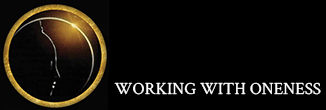by Llewellyn Vaughan-Lee, July 2015
First published on The Huffington Post.
“The ecological crisis is essentially a spiritual problem.”
These words spoken by an Eastern Orthodox theologian, Metropolitan John Zizioulas, at the Vatican news conference on the papal encyclical are profoundly important. The release of the encyclical was soon followed by a new study that confirmed the Earth has now entered a new extinction phase, its sixth great mass extinction event.
Our present environmental crisis is the world’s most pressing concern, and yet, this discussion has so far taken place mostly in the arena of science, politics and economics. Science can show us the physical symptoms of a deep global imbalance, of a civilization no longer sustainable, and economic models illustrate how painfully this effects the poorest among us. But Pope Francis’ encyclical on climate change, and this week’s Vatican conference, shift this most vital issue firmly onto a moral and spiritual ground. He reconnects the well-being of the Earth to the well-being of our soul, care for the Earth to care for the soul. He suggests that while technology is often presented as the only solution, it “proves incapable of seeing the mysterious network of relations between things and so sometimes solves one problem only to create others.” And elsewhere he adds the poignant statement, “Rather than a problem to be solved, the world is a joyful mystery to be contemplated with gladness and praise.”
The importance of this realignment cannot be overstated. For the past ten years, I have stressed the urgent need for a spiritual perspective in many articles, talks and radio interviews. Now, due to Pope Francis’ encyclical, what had been a fringe and at times a lonely voice, has suddenly become mainstream. It is our sense of being separate from the Earth that has allowed us to abuse it. If we held the Earth as sacred, as part of the living oneness to which we belong, could we treat it in this way — would we pollute its rivers, kill off its species? Forgetfulness is a most potent poison, enabling our desires to destroy what is most precious. Sacred ground brings us back to the most basic human values, our sense of relatedness and the vital work of “care for our common home.”
But how can we reclaim the inherent “mystery” that belongs to all of creation, while living in a “throw away” culture that has covered this wonder with waste? How can we return to a magical world, one that we have made toxic with our greed and desires, with our addiction to consumerism? Could it begin with something as simple as recognizing that we are not separate from the Earth, but — breathing its air, sustained by its food, nourished by its beauty — are part of this miracle?
The signs of wonder are all around us, from the simple mystery of a sunrise to the laugh of a child. So too are the signs of desolation we have created, the rubbish we scatter on our streets, the toxins in our water, the species we have depleted. And amidst both the beauty and the desolation is the cry of the Earth, the living being to which we all belong. If we can hear this cry despite the clamor of distractions that bombard us, we can begin the work of returning to what is sacred and whole, to that connection that unites us all. Echoing the teaching of St. Francis, the pope writes how “Everything is related, and we human beings are united as brothers and sisters on a wonderful pilgrimage, woven together by the love God has for each of his creatures and which also unites us in fond affection with brother sun, sister moon, brother river and mother earth.”
Only from this place of wholeness and unity can we begin this work of healing what we have desecrated. If we remain in a place of separation from the Earth, from each other and all of our brothers and sisters, we will only continue the cycle of mutual destruction. Sadly science only too often attempts “solutions” to our ecological predicament from a place of separation, that we are separate from the Earth, or that the environmental crisis is a problem separate from us that we can “solve” through technology or carbon credits–or the even more dangerous economic ideology that the Earth is a resource to sustain our energy intensive culture–not realizing that it is this consciousness of separation that has brought us to this precipice of climate change.
For too long we have separated spirituality from the Earth, the Creator from the creation. We each must find a way to return to the sacred unity, where the Earth is whole as well as holy.
For some it may be the “care for the Earth (our common home)” in how we live our daily life. I often think that it is the simple acts of care and attention that are most important–then we feel the bond that connects us all together. There are so many such moments in a day. Filling my bird feeder and watching the sparrows come around is a shared joy, the red-headed woodpecker trying to take over, eating its fill.
It is our love and care for the Earth that is the most powerful force of healing and transformation. The cry of the Earth–as we recognize and feel her suffering–can also open our hearts. This suffering does not belong to another, but to the very core of our own being, where we are one with the Earth. This cry touches deeply within us, the soul of the world meeting our own soul, restoring the sacred ground of being, the interbeing we have with the Earth and all life. Then, as in the prayer Pope Francis finally quotes, we can find our place:
As channels of your love
for all the creatures of this earth.
Cry of the Earth – Llewellyn Vaughan-Lee from Working with Oneness.
